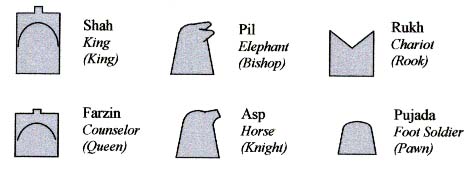The form of chess we play today is just over 500 years old. And our conventional design of chess pieces, the Staunton style, has only been around for about a century and a half.
But before our modern chess spread across Europe, there was an older form of chess, lasting for almost 1000 years, with its own rules and with its own conventional playing pieces. This older form existed in Persia before the 7th century Muslim conquest. It then spread across the expanding Arab world, through northern Africa, and throughout Europe — all the while maintaining the same set of rules and the same style of chessmen.
Although some minor variations did occur, the basic game remained the same, lasting centuries and spanning continents.
The conventional shapes of the ancient chess pieces are rather mysterious. Generally speaking, they are simplified abstractions based on familiar carvings of the pieces they represent: The King (on elephant back), his Counselor (also riding an elephant) an Elephant warrior (the tusks are apparent), a Horse (the protruding nose identifies this piece), a Chariot (a V-shaped groove somehow indicates a chariot).
The rules given here are the best available account of how the game of chess (Persian chatrang; Arabic shatranj) was played in Persia, probably as long ago as the 6th century A.D.

By: Brant




No comments:
Post a Comment